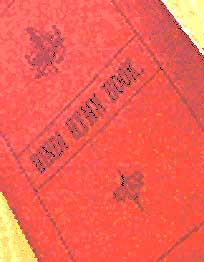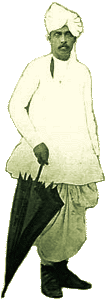
FOREVER
Notes on the Canadian Mission to Trinidad, VI
The Role of the Converted in the Mission
Revelation 14:6
And I saw another angel fly in the midst of heaven, having the everlasting gospel to preach unto them that dwell on the earth, and to every nation, and kindred, and tongue, and people...
The missionaries made it their first priority to recruit influential leaders in every village. There they found some degree of skepticism, and opposition from Hindu scholars and priests; but also many willing and committed followers.
Names particularly mentioned with gratitude and respect by Dr Grant, from the early days of the mission are:
- Paul Bhukan
- Andrew Gayadeen
- Lal Bihari
- Charles Clarence Soudeen
- David Mahabir
- Benjamin Balaram *
- Timothy Sirju
- Babu Ujagarsingh.
* Benjamin Balaram was from India and returned there after some ten years. He always wore full Indian dress, and rode a donkey to visit workers on the estate. He made quite a startling spectacle as he rode down a track. With the donkey hidden from view and himself floating like magic high above the waving sugar-cane, with white garments flying against a deep blue sky, he reminded Rev. Christie of Rev. 14:6.
| In the north, Dr Morton formed a close personal alliance with Andrew Gayadeen, as Dr. Grant did with Lal Behari in the south. Both missionaries, creditable university scholars of Latin and Greek, dipped into the classical connection of these languages to Sanskrit and taught themselves enough Hindi to gain the credibility of their converts. The energetic Morton, apart from evangelical pusuits, also dabbled in agricultural enterprises; and with the assistance of Gayadeen, even set up a printing press for Hindi publications in Tunapuna, likely the first in the New World. Produced first in Tunapuna as a missionary marketing tool, as it were, the Hymn Book went into at least a fourth edition, the latter being produced in India under the auspices of Dr. Coffin well after Morton and Gayadeen's demise. |  |
Rev. Grant and Morton's mission met fertile ground among the Indian villages, in that the Hindu religion incorporates the concept of all-powering individual self-improvement, the power of personal individual change and commitment to universal ideals. Jacob Laltoo, whose photo appears on the front-page of this website, regularly left his village (Diamond) at 4:00 am and walked the 15 miles to Oriental Hall in San Fernando to receive education directly from our dedicated emissaries of the Gospel. He was not alone.
The impetus to propagate the web of elementary schools across the island, and subsequently to establish Naparima College, stemmed from a just partnership: on the one hand, the eagerness of the Indian population for education and social security within the complex and competitive nineteenth-century Trinidadian micro-society; on the other, the zeal of the early missionary vision.
The early missionaries told stories of being conveyed on the backs of converts through otherwise impassable stretches of mud to reach remote settlements.
No more compelling image of the partnership could be portrayed.
Susamachar Church
Toward a Theological College, 1890
Iere Home for Girls, 1890
The Rev. Dr. Kenneth James Grant in the field
Main NC-Forever Page

